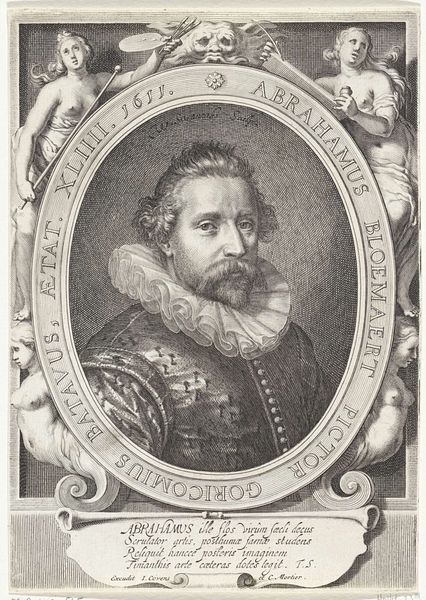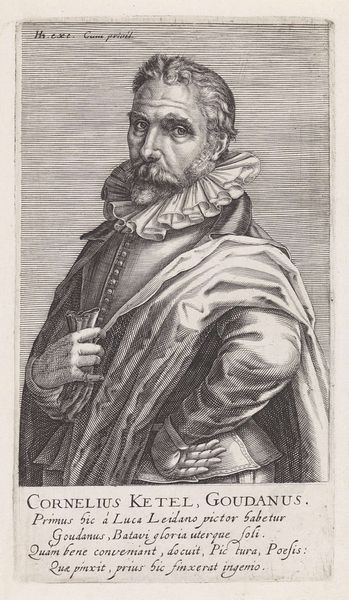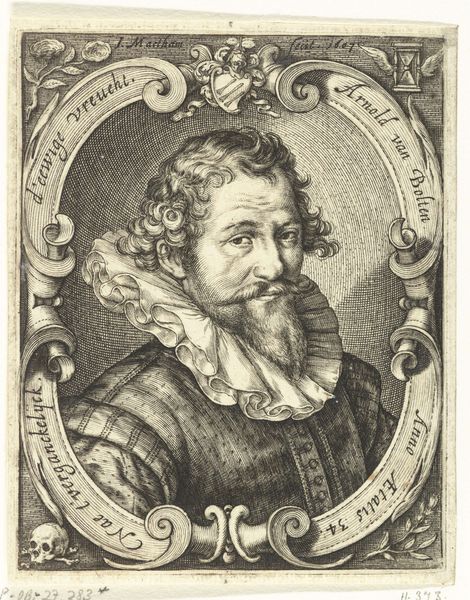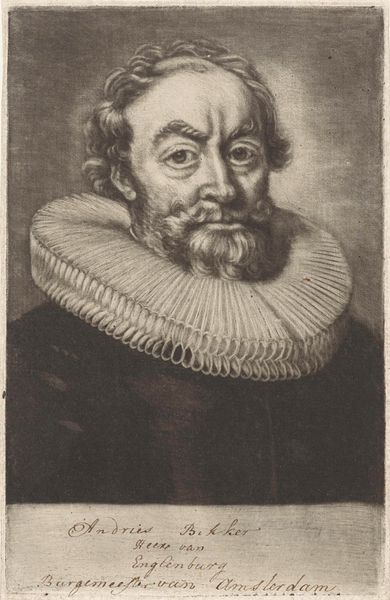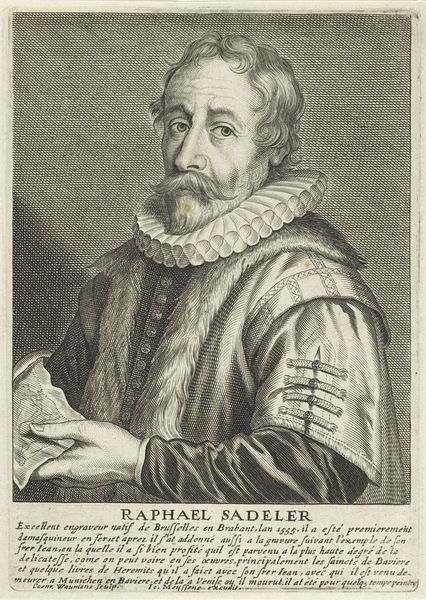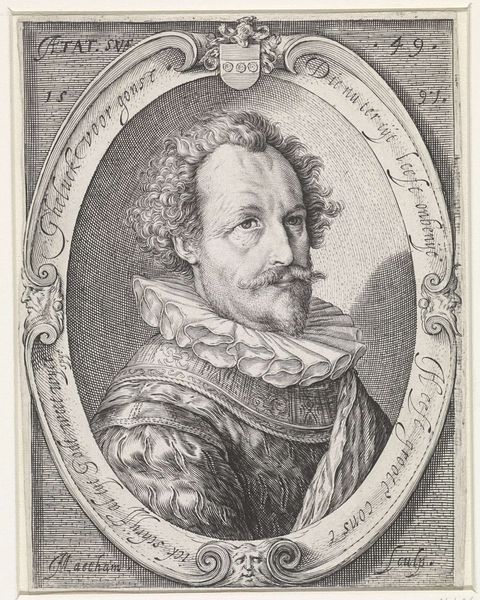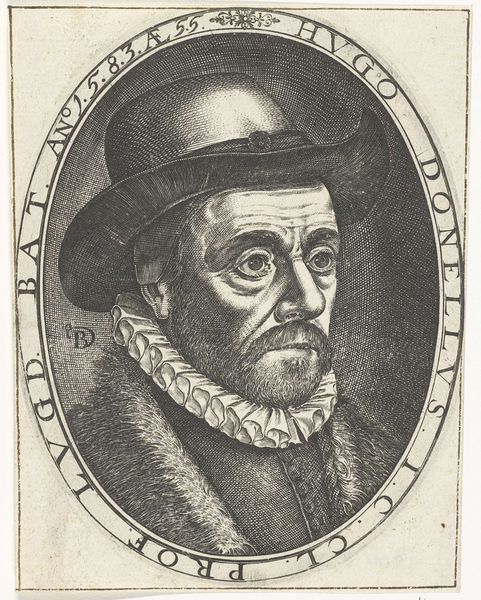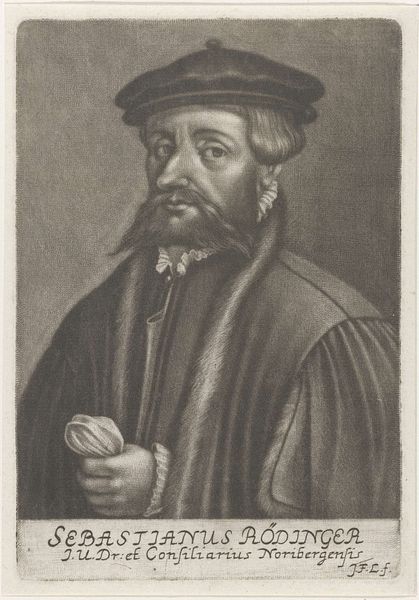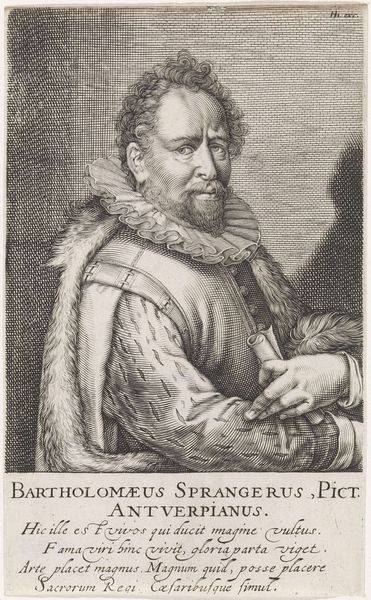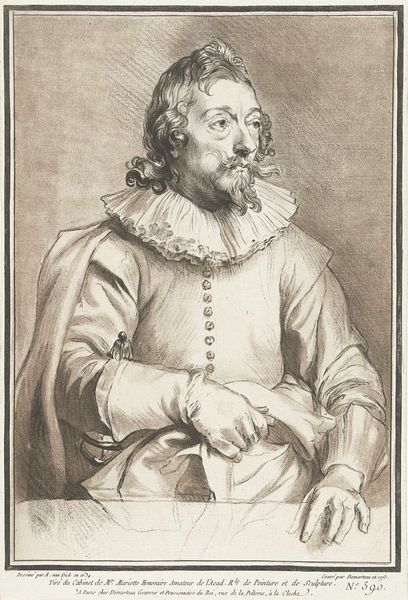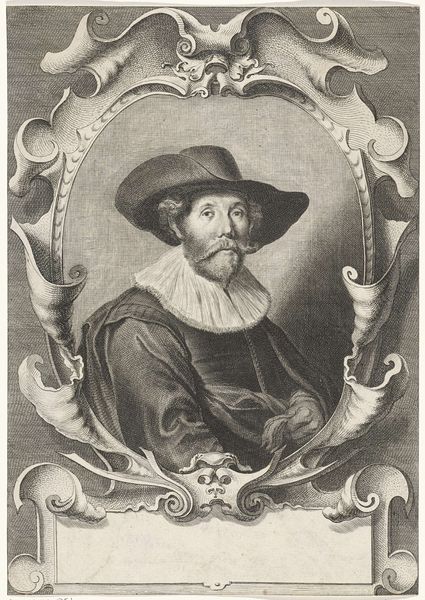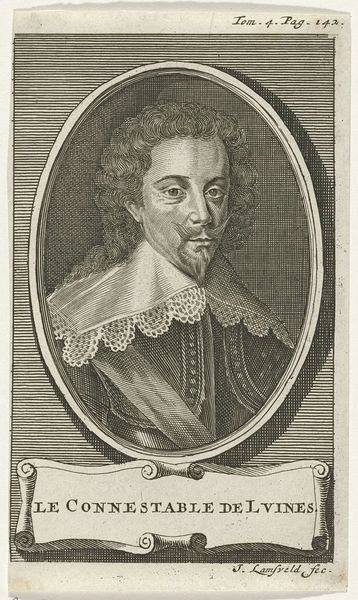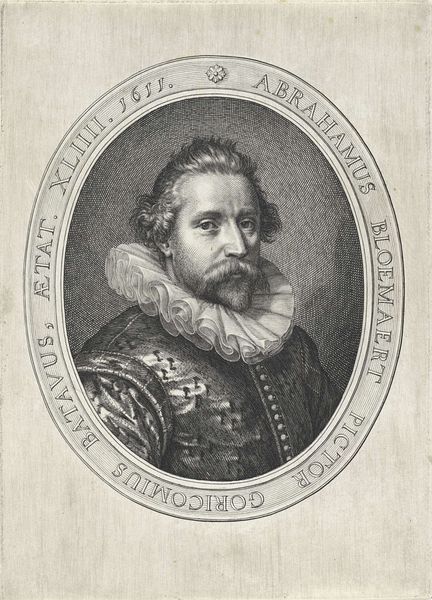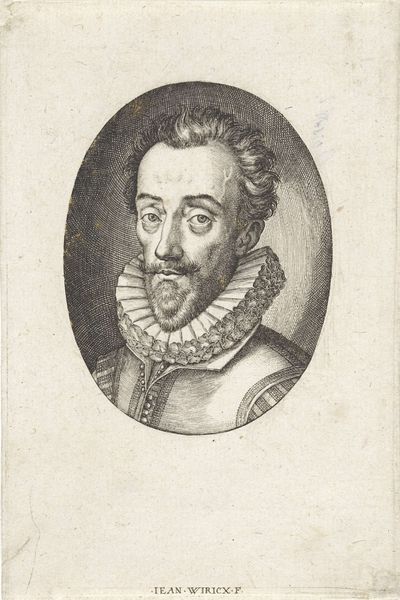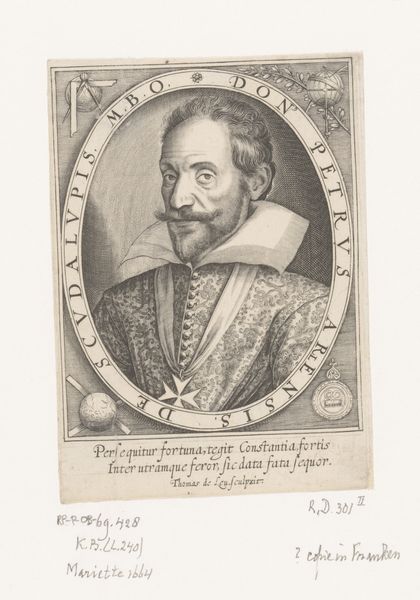
print, etching, engraving
#
portrait
#
baroque
# print
#
etching
#
old engraving style
#
caricature
#
portrait reference
#
engraving
Dimensions: height 158 mm, width 104 mm
Copyright: Rijks Museum: Open Domain
Editor: Here we have a piece entitled “Portret van Peter Paul Rubens,” dating somewhere between 1732 and 1760. It’s a print – an etching and engraving actually – by Jean Henri van Schawberg. The detail is really striking. How do you interpret this work from a formal perspective? Curator: Focusing on the interplay of line and tone, observe the meticulous hatching and cross-hatching. How do these linear elements coalesce to define form and create the illusion of depth? Note the contrast between the densely worked areas and the relatively untouched spaces; what is the effect? Editor: The density around the face and hat really make them pop. What about the material aspect of it as an engraving? Curator: Indeed. Consider the texture inherent in the engraved line – the slight burr, the deliberate variation in weight. How does this texture contribute to the overall visual experience? Note how the crispness of line delineates details like the lace collar. Does the controlled precision of the engraving technique align with the conventions of Baroque portraiture? Editor: It does feel quite precise. What strikes me is how much emotion they were able to convey through this. It almost feels like you could tell who Rubens was by looking at this. Curator: Precisely. Through structural engagement with artistic elements – light, shadow, line, and texture – Schawberg transcends mere representation, conveying the dynamism often associated with the subject himself, even across decades and via the indirectness of reproduction. It is quite masterful when seen from that perspective. Editor: I learned so much by simply analyzing these technical choices. Thank you. Curator: My pleasure. The deeper meaning often lies in understanding structure.
Comments
No comments
Be the first to comment and join the conversation on the ultimate creative platform.
